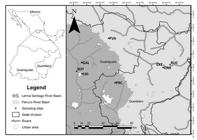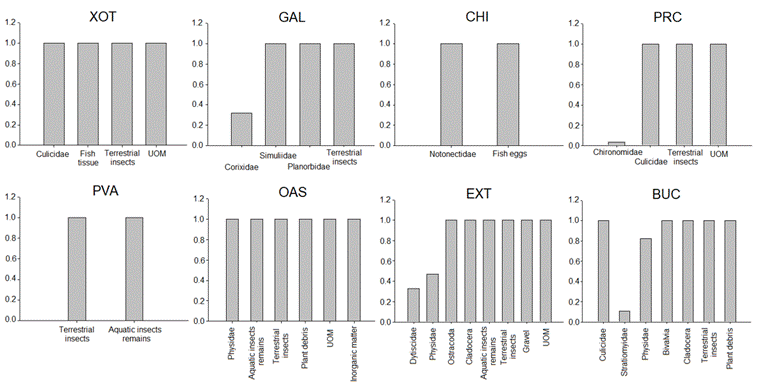ABSTRACT
Pseudoxiphophorus bimaculatus is an invasive species widely spread throughout freshwater ecosystems in central Mexico, for that reason we described its trophic strategy into a gradient of environmental quality. We sampled individuals of P. bimaculatus at eight sites located in the Lerma-Chapala and Pánuco River Basins during dry season. These basins have been impacted by industrialization and urbanization processes, but are considered as water reserves in México. To evaluate the environmental quality of the river, we applied the Visual-based Habitat Assessment, the Index of Biological Integrity and the Family-level Biotic Index. We assessed the trophic guild, the diet width, the omnivory level, and the diet selectivity. We also explored the relation of trophic strategies with the habitat condition. We captured a total of 202 individuals of P. bimaculatus from 10 to 67 mm of SL, finding a total of 24 food items. The diet of P. bimaculatus was composed of terrestrial, aquatic insects and bony fish. Pseudoxiphophorus bimaculatus in some sites can feed on different trophic levels, in other it is a specialist and secondary consumer. We found that P. bimaculatus changes its diet according the alterations in the habitat structure, water quality, and biotic integrity. Moreover, this invasive species can endure changes in the trophic web and food availability.
Keywords:
Biological Invasions; Exotic Species; Feeding Ecology; Freshwater Ecosystems; Poecílidos

 Thumbnail
Thumbnail
 Thumbnail
Thumbnail
 Thumbnail
Thumbnail
 Thumbnail
Thumbnail



